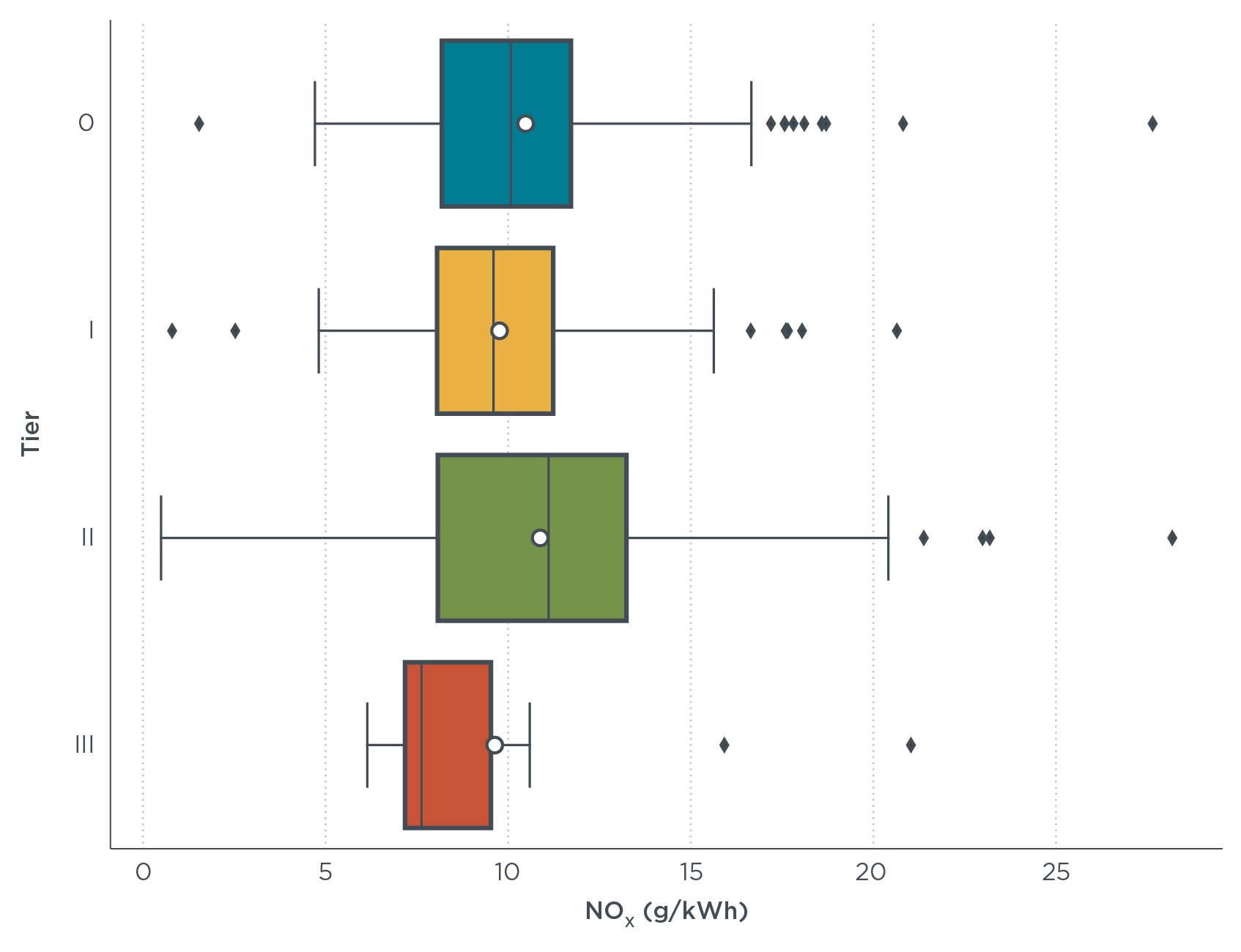NOx emissions from merchant vessels in coastal China: 2015 and 2030
Working Paper
Real-world NOx emissions from ships and implications for future regulations
This working paper analyzes 615 samples of real-world NOx emissions from 545 ships operating in Danish waters between the North Sea and the Baltic Sea in 2019. Measurements were obtained using sniffers attached to helicopters flown into exhaust plumes. The data includes measurements from ships covering all engine age categories (tiers).
Newer Tier II engines had significantly higher NOx emission rates than older Tier I engines. Moreover, there was no statistical difference in NOx emission rates between unregulated Tier 0 engines and Tier II engines.

Note: white dots show mean; vertical bars show median; box shows interquartile range; whiskers show minimum and maximum (excluding outliers); diamonds show outliers.
Figure S1. Boxplot showing distribution of observed NOx emission rates by engine tier.
The greatest mean NOx emission rates were found at main engine loads below 25%, with emissions averaging 12 g/kWh across all vessel types and engine tiers. Emission rates decrease as main engine loads increase, with mean emission rates of 8.1 g/kWh at loads greater than 75%. Existing NOx test cycles assume that marine engines most often operate at higher engine loads; however, this study finds that engines typically operate at lower engine loads.
NOx regulations could be revised to make them more effective at reducing air pollution. Rather than relying on weighted emissions limits, the International Maritime Organization could consider implementing not-to-exceed (NTE) standards for new and existing ships, particularly focusing on operations at low loads, and including a test point below 25% load.
This paper was revised on 12 October 2023 to correct typographical errors on the y-axis label for Figure 5 and the bottom panel label of Figure 6.
